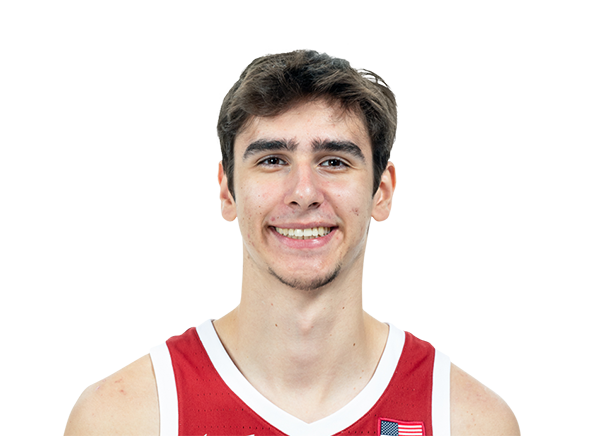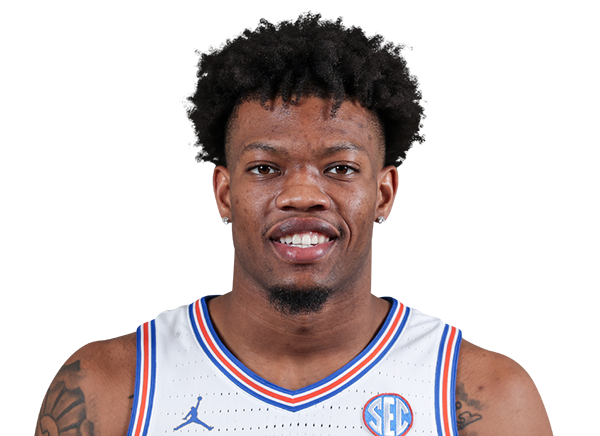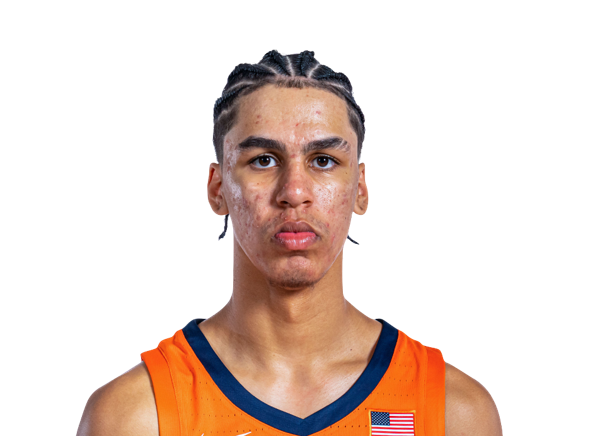Full Analysis
Offense
Maxime Raynaud offers one of the most well-rounded offensive toolkits in the class for a modern big. At over seven feet tall, he blends size with legitimate perimeter shooting, fluid ball-handling, and advanced passing instincts: traits that enable him to function as both a finisher and creator. Stanford often used him as the fulcrum of their halfcourt sets, and he thrived in that high-usage role without sacrificing efficiency.
Raynaud is especially dangerous in pick-and-pop actions, where he consistently gets clean looks thanks to his wide screens and his quick, high release. He shot over five threes per game this past season and knocked them down at a respectable clip, particularly off the catch. He’s comfortable operating above the break or from the corners, and when run off the line, he can attack closeouts using a solid first step and impressive body control for his size.
His driving ability is aided by soft touch around the rim, including floaters, euro-steps, and occasional dunks. While he isn’t overpowering in the post, he has just enough craft to get to jump hooks over either shoulder. More importantly, his handle and footwork allow him to function outside the confines of traditional low-post offense, often attacking from the perimeter, slashing off the pop, or creating mismatch opportunities in space.
Raynaud’s passing further elevates his offensive value. He sees over defenses and delivers with accuracy from the elbows, low block, and out of dribble handoffs. His assist numbers don’t tell the full story, as he makes timely swing passes, relocates the ball without it sticking, and uses height to pass over traps and doubles. His short-roll reads, in particular, are advanced, and he’s comfortable making live-dribble passes on the move.
There are still limitations. His handle can get loose in traffic, leading to strips or turnovers when pressured, and he can occasionally overdribble. His midrange game is less developed than his three-point shot, and his post scoring lacks a dominant go-to move. At times, he settles for finesse rather than creating physical advantages, and his decision-making when collapsing the defense can still improve.
Defense
Raynaud’s defense is more subtle than dominant, but it’s been effective across multiple coverages. While not a vertical rim deterrent in the vein of elite shot-blockers, he anchors the paint with strong positioning, solid anticipation, and improved physicality. He’s rarely out of control and tends to contest with verticality rather than hunting blocks, which helps keep him out of foul trouble.
He holds his own well in drop coverage and has shown flashes of mobility that suggest he can hedge, recover, and even switch situationally. His lateral movement is smoother than most bigs his size, aided by good hip flexibility and effort on closeouts. On-ball, he can slide well enough to contain post players and survive against slower forwards. Off the ball, he uses his length and awareness to rotate early, tag cutters, and close space when necessary.
Still, Raynaud’s defensive ceiling is capped somewhat by his lack of burst and leaping ability. While he affects shots, he’s not a high-volume rim protector and can be slow to recover if pulled away from the basket. At times, he gets caught too high on ball screens, leaving the rim vulnerable, or he overreacts to penetration and opens up cutters behind him. These lapses, combined with moderate block and steal rates, raise questions about his ability to anchor a defense without a more athletic frontcourt partner beside him.
Looking Ahead
Raynaud’s path to an NBA role is clear. His blend of size, floor-spacing, passing, and mobility make him a fit in modern five-out offenses, especially alongside slashers or guards who benefit from a big who can both stretch the floor and keep the ball moving. He may not project as a dominant interior scorer or a defensive anchor, but his balance and feel make him an attractive option as a connector big in starting or rotation lineups.
He’ll need to keep refining his shot consistency, polish his decision-making as a driver, and stay grounded defensively, but the growth trajectory he’s shown; rising from a walk-on to a 20-and-10 ACC first option, suggests he’s not done improving.



